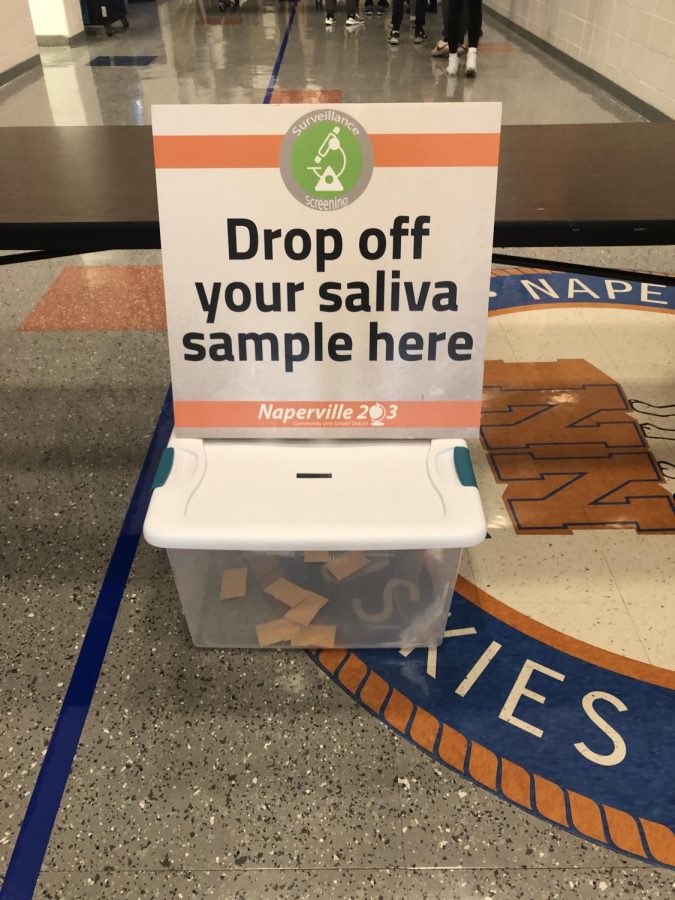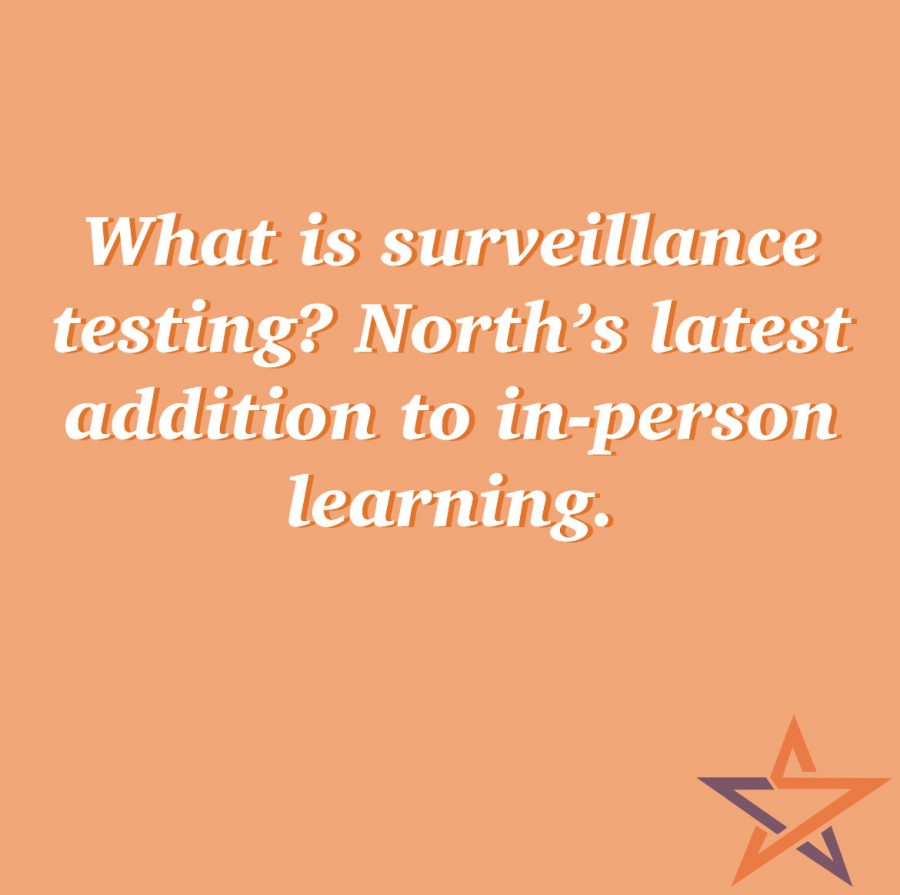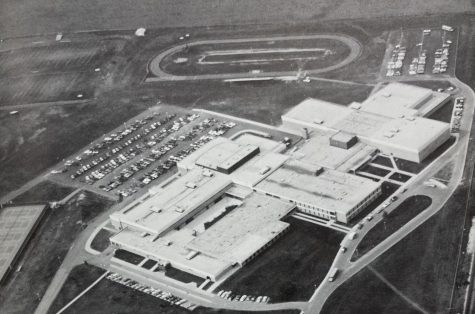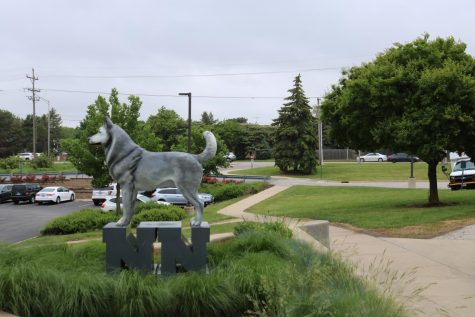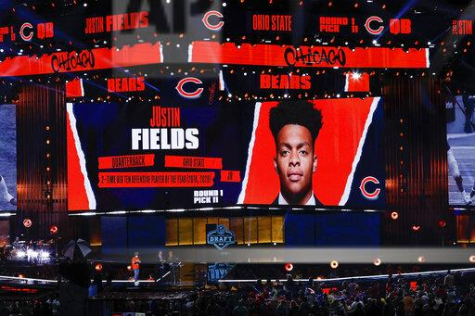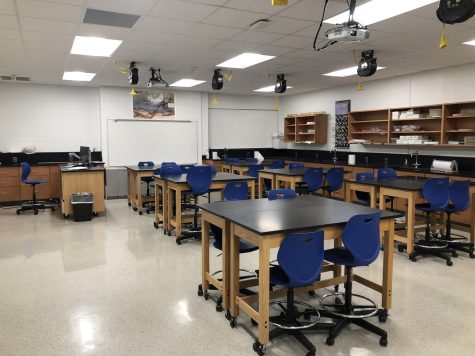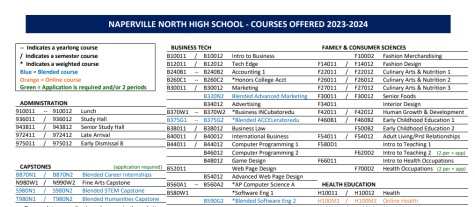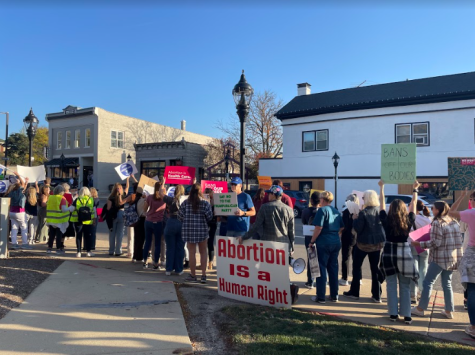Naperville North participates in COVID-19 surveillance screening
Photo by Tessa Devine
Surveillance testing drop-off sights are located at the main entrance and athletic entrance.
As District 203 continues in-person learning, the district has incorporated multiple mitigation strategies to ensure the safest return to school, one of these being COVID-19 surveillance screening.
Announced in January, the voluntary testing program was offered to staff and students grades 6 through 12. Surveillance testing is designed to stop the transmission of Covid, particularly by asymptomatic carriers.
Students and staff participating in this screening provide a saliva sample weekly on their designated day (indicated by the last name of the students). The samples are then sent to the lab where they are tested for high viral loads of the COVID-19 virus. Results are provided to the district within 24 hours. Staff and parents are only notified of test results if the screening is positive and requires further medical evaluation. The surveillance test doesn’t make a diagnosis, but rather identifies people who need a PCR COVID-19 test, which can provide a more accurate diagnosis.
Students received their testing kits during their gym classes within the first few weeks back to in-person learning. The kit provides materials for up to twelve weeks of tests. Students drop off their tests in one of the two designated areas: the athletic and main entrances. This has been the fourth week of surveillance screening at Naperville North.
North staff, students and their families have mixed opinions about the impact and necessity of this program. Senior Kaitlin O’Malley and her sisters opted into the surveillance screening the day the district announced the plan. Although she was apprehensive at first, her and her family decided it was the most responsible choice.
“We chose to do it to have both peace of mind that we’re not positive, but also to guarantee that we’re not asymptomatic and possibly spreading COVID-19 around without knowing,” O’Malley said.
Other staff and students chose not to sign up for surveillance testing for a variety of reasons. Some students and their parents are not comfortable waiving certain health privacy rights, which is a requirement in order to take the tests.
Other students are fearful of the possibility for a false positive and how that might affect their school day. An anonymous Naperville North student spoke about their decision not to opt-into the surveillance screening program.
“Although I am extremely grateful for the opportunities Naperville North is giving us with these COVID-19 tests, I was worried that if the test said I had COVID-19 and it was a false positive, I would miss out on the great parts of in person learning.”
Participation in surveillance testing is highly encouraged by the district but is not mandatory. While surveillance testing has its benefits for individual staff and students, it also has benefits for the district as a whole. Asst. Principal Jeff DiOrio further explained the main goal of surveillance testing.
“The hope was to get a high number of students who were doing the testing so that we would have a higher degree of certainty that we don’t have students or staff who are asymptomatic walking around the building,” DiOrio said. “The more people we know are taking it increases the chance that we know if there are any asymptomatic kids at school.”
The district’s current plan is to continue surveillance screening through spring break; they will re-evaluate at that point. Students and staff have the opportunity to opt-into surveillance screening each week. The COVID-19 screening ultimately allows the district to provide more in-person teaching opportunities.
“Having a positive test early will help stop the spread which I think is so important,” O’Malley said. “Being able to say that I’m negative when coming to school makes me feel like I’m doing my part to stop the spread.”
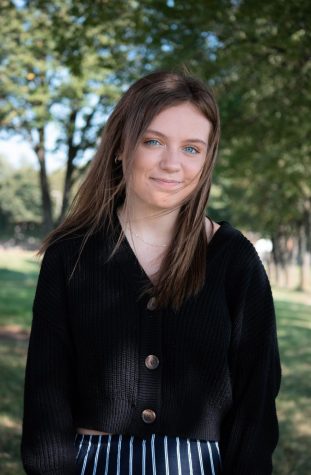
Tessa Devine is a senior at Naperville North and is beyond honored to be this year’s Managing Editor. Tessa loves feeling connected with her school...

A senior at North, Faith is thrilled to begin her third year with The North Star as the Multimedia Creative Director. In addition to designing graphics...

